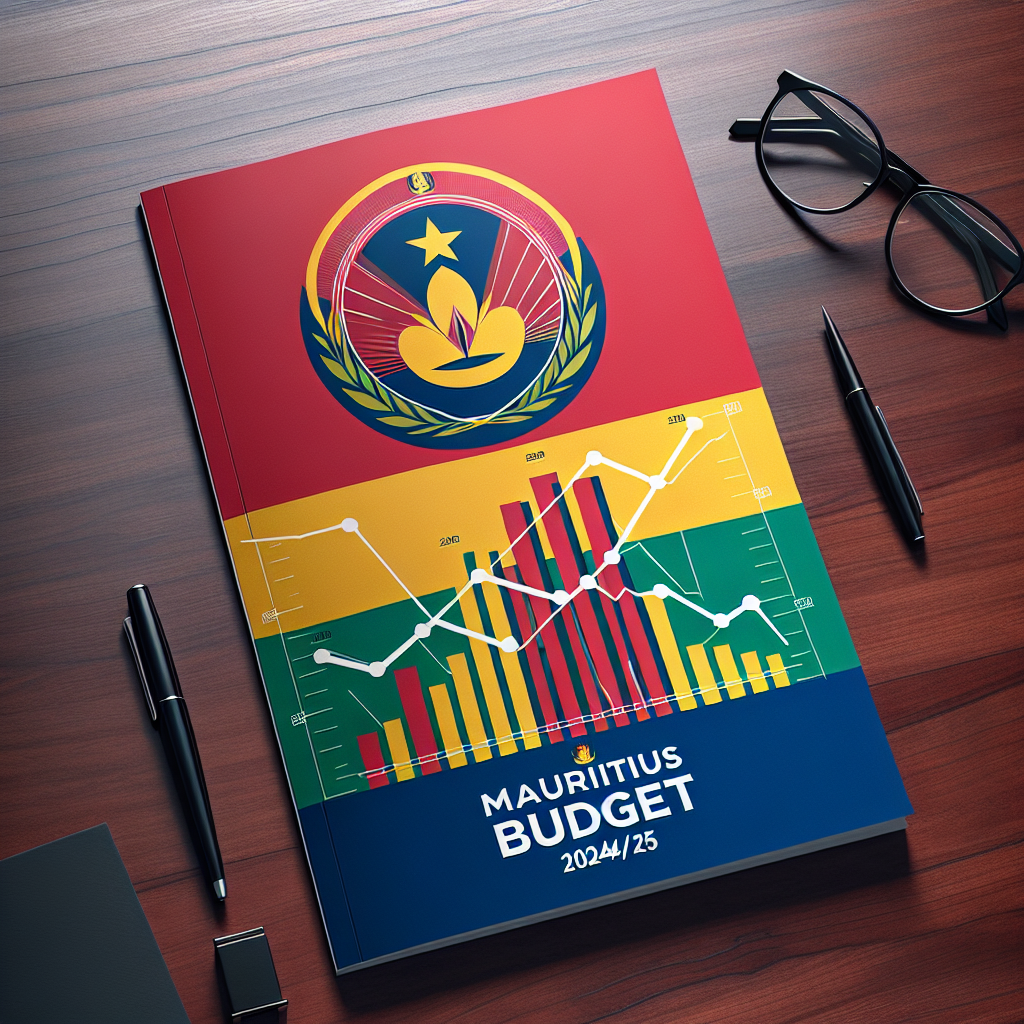Mauritius Charts New Fiscal Path to Safeguard Economic Future and Prosperity
With a legacy of strong fiscal policymaking that transformed it from a mono-crop sugar economy into a diversified, upper-middle-income nation, Mauritius now finds itself at a turning point.

- Country:
- Mauritius
Mauritius, once home to the iconic flightless dodo, is now navigating a new existential challenge—not the threat of extinction, but the risks associated with rising public debt, ageing demographics, and economic inefficiencies. Just as the dodo has become a national emblem of environmental conservation, Mauritius today seeks to preserve a different kind of legacy: inclusive and sustainable economic prosperity.
With a legacy of strong fiscal policymaking that transformed it from a mono-crop sugar economy into a diversified, upper-middle-income nation, Mauritius now finds itself at a turning point. The government’s newly released 2025–2026 national budget marks a decisive recalibration, aimed at realigning public finances, ensuring long-term resilience, and achieving equity across generations.
Facing a New Set of Economic Pressures
The country’s public debt stood at a high 87% of GDP in 2024, a reflection of large-scale investments made to buffer external shocks and finance ambitious development goals. Yet, this level of debt is unsustainable in the long term, especially given rising fiscal obligations.
Mauritius must now balance the imperative to invest in infrastructure, social services, and climate resilience with the need to reduce its debt burden and improve fiscal efficiency. Compounding these challenges is the growing pressure of an ageing population, low productivity growth, and limited room for expansionary fiscal policies.
2025–2026 Budget: A Blueprint for Sustainability
The newly announced budget addresses these concerns through a dual approach: boosting government revenue and curbing expenditure. Key targets include:
-
Increasing tax revenue by over 2% of GDP in 2025–26
-
Reducing public expenditure by more than 1% of GDP
-
Cutting government debt from 87% of GDP in 2024 to 75% by 2030
These targets are closely aligned with recommendations from the IMF’s recent Article IV Consultation and Selected Issues Papers, which emphasized the need for comprehensive fiscal reform to anchor medium- and long-term sustainability.
Revenue Mobilization: Reducing Leakages and Expanding the Base
Tax exemptions in Mauritius are among the highest in peer economies, costing the fiscus 4.6% of GDP in 2024–25. To reduce these leakages:
-
Selected VAT and excise duty exemptions—including those for construction, real estate, and electric vehicles—will be phased out
-
Tax thresholds will be lowered to expand the number of active taxpayers
-
New tax instruments and enforcement mechanisms are being introduced
However, authorities have emphasized the importance of sequencing reforms to limit potential economic distortions and shield low-income households from disproportionate impacts.
Pension Reform: Tackling Intergenerational Fiscal Risk
One of the most pressing expenditure concerns is the Basic Retirement Pension (BRP) program, which provides a universal benefit to all citizens aged 60 and over. Since 2019, BRP payouts have more than doubled, while the old-age dependency ratio is expected to double again in the next 30 years.
Continuing the current model would result in a massive transfer of fiscal burdens from younger to older generations, potentially destabilizing the tax system and undermining intergenerational equity.
The 2025–26 budget introduces incremental reforms, including:
-
A gradual increase in BRP eligibility age, aligning it with the official retirement age of 65
-
Enhanced targeting mechanisms to ensure that vulnerable pensioners remain protected
-
A policy review process to address long-term pension sustainability
These measures represent a critical first step in reshaping Mauritius’ pension architecture in the face of demographic transition.
Spending Smarter: Cutting Inefficiencies in Social Transfers
Mauritius currently operates a range of subsidies and aid programmes, many of which are broadly targeted and regressive. According to government data, just 11% of beneficiaries of the social aid program are classified as poor, revealing inefficiencies in allocation.
To address this, the new budget proposes:
-
Gradual withdrawal of untargeted subsidies
-
Redirecting savings toward more effectively targeted support for low-income groups
-
Scaling up digital platforms to improve social welfare delivery and reduce administrative costs
These changes are designed to enhance the equity and effectiveness of public spending, ensuring that government support reaches those most in need, while reducing fiscal waste.
A Vision Beyond Debt
Mauritius’ new fiscal path is a reflection of a deeper policy shift: one that places fiscal sustainability at the heart of national development. From revenue reforms and pension sustainability to efficient public spending, the government’s roadmap is designed to prevent a scenario where today’s economic model becomes as outdated and vulnerable as the dodo.
“Unlike the dodo, now extinct, Mauritius’ economy will continue to thrive so long as fiscal sustainability is secured,” a government official noted.
Through thoughtful planning and timely reforms, Mauritius aims to not only stabilize its economy, but also to create a resilient, inclusive, and future-ready society that offers opportunities to both current and future generations.
Tags:










